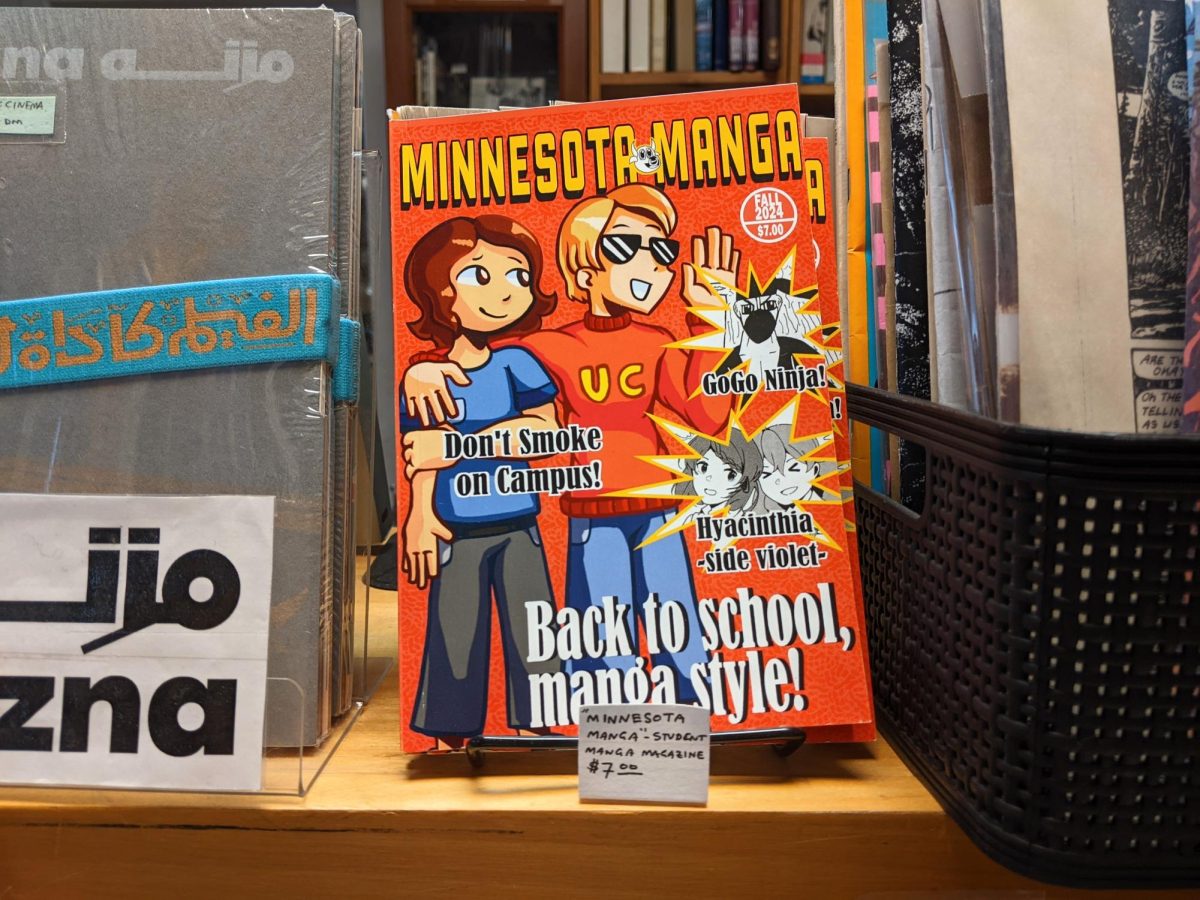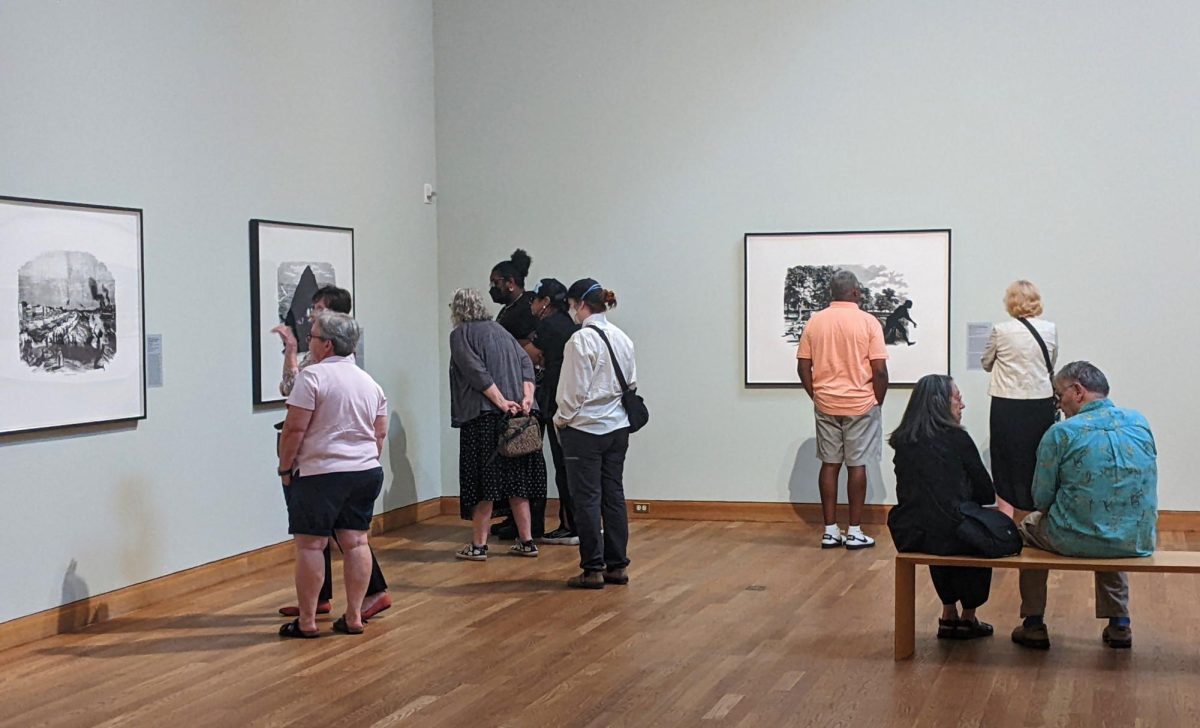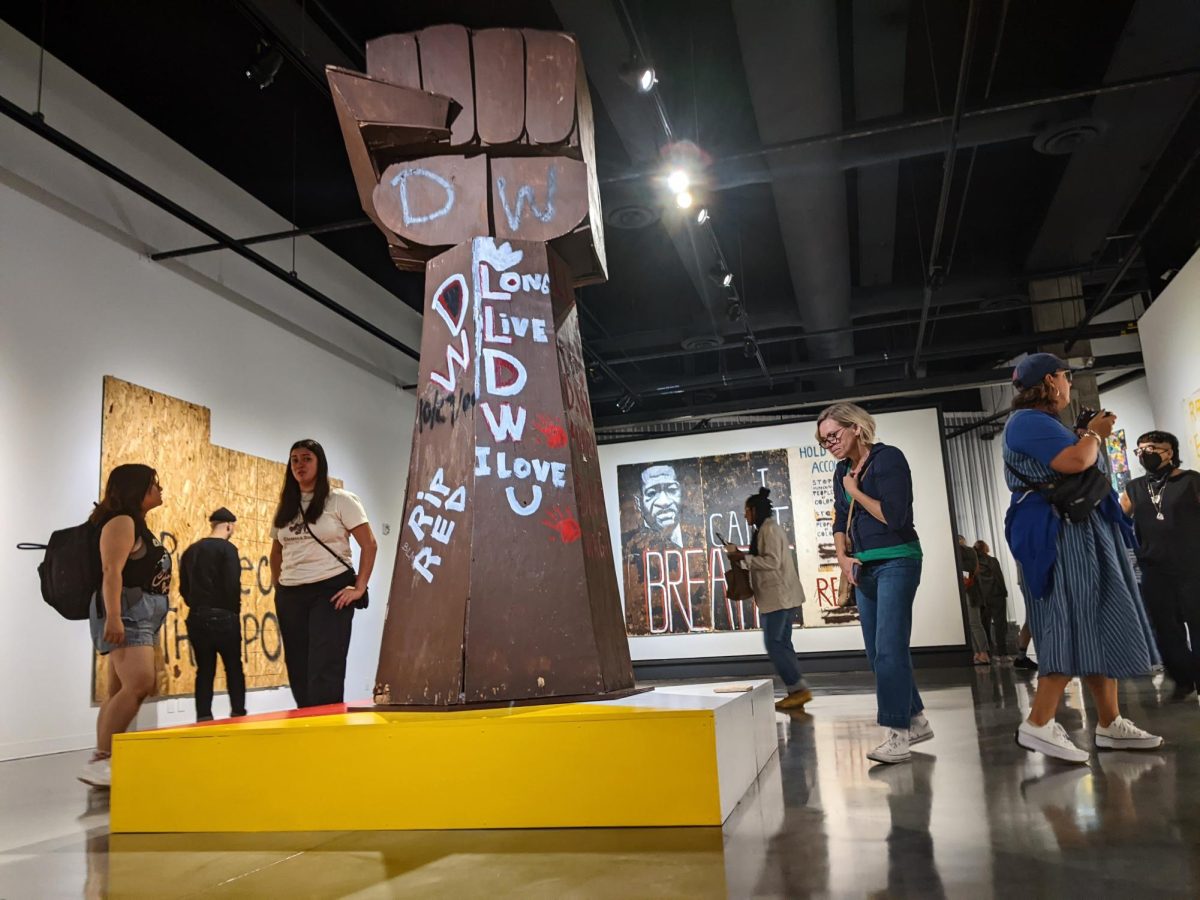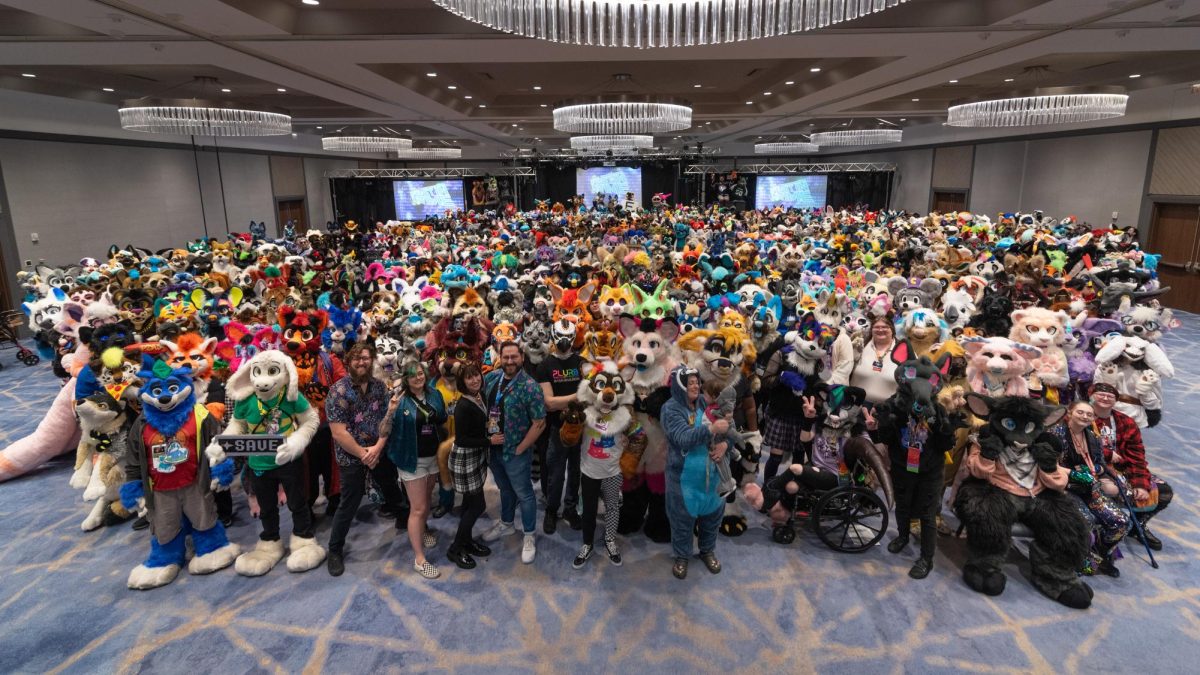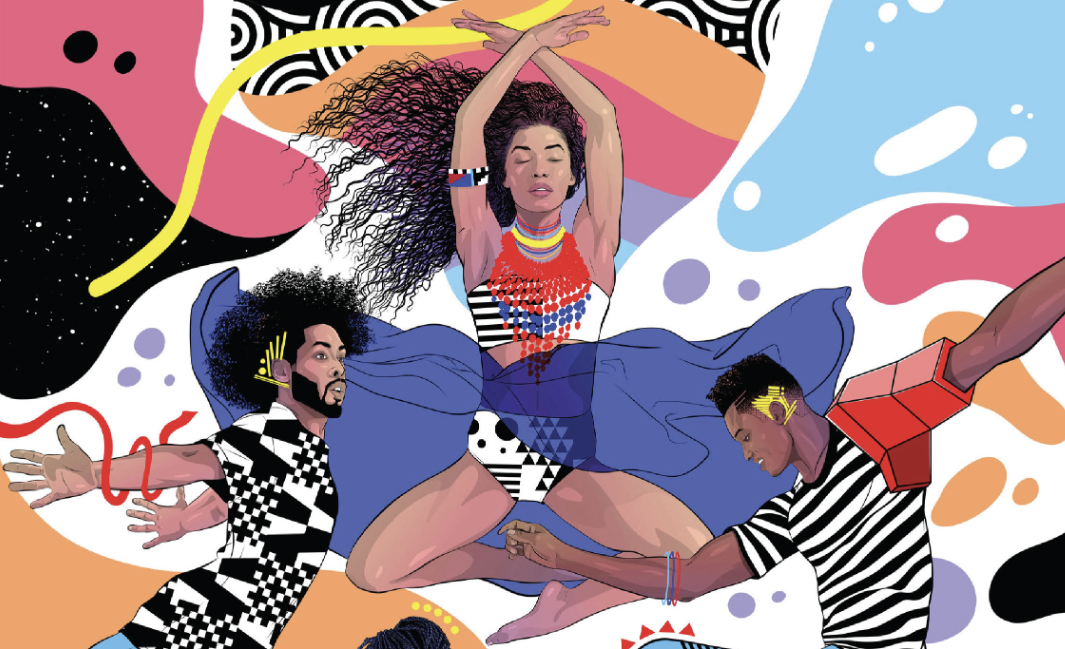The moment Ted Koppel announced that Nightline would be exploring the cultural phenomenon the kids call rap, the music’s normally irresistible head-boppin’ beats vanished. It is the same way that too much discussion over the significance of the riot grrrl movement overshadows Kathleen Hannah’s mighty screams over the gritty guitars of Bikini Kill, and too much jazz history strays from the excitement of Louis Armstrong’s soaring trumpet.
The media’s questions of social relevance ñ and Def Jam founder Russell Simmons’s bank account ñ drained the heart and soul out of rap and took away all the reasons hip hop became a dominant force in music in the first place. What’s refreshing about the Walker Art Center’s One Planet Under a Groove: Hip Hop and Contemporary Art is that the politics of rap are questioned, but these questions are not jammed down your throat. Instead, One Planet excels by featuring art influenced by hip hop. It feels like a celebration or act of appreciation rather than a seminar.
Like a deejay’s samples of James Brown or a graffiti artist’s message via subway, hip hop has a history of gaining recognition through established works of art. One Planet looks at the way this technique has been used to battle its way into museums.
Let’s look to Juan Capistran’s “The Breaks” as an example: In 2000, the world of visual arts was still resistant to the influences of hip hop. In response, Capistran walked into a museum and began dancing on one of their exhibits. A series of photos shows him break dancing atop a square platform by well-known Minimalist, Carl Andre. Capistran uses the adored-in-art-circles artist to connect street culture to high art.
Douglas Ross brings hip hop into the museum by transferring a graffiti tag on a city wall to fiberglass in a piece titled “Graft.” The same tag, passed everyday at bus stops, subways, or street signs, becomes a thing of beauty once removed from its natural habitat. In a museum, the taken-for-granted piece looks right at home next to other abstract and modern art. As another example, in “Out of Sequence,” conceptual artist David Hammons inserts rappers Tupac Shakur and Biggie Smalls into a book on Christo (a different kind of “wrapper;” the artist is famous for draping fabric around buildings like the Reichstag in Germany).
One of the artists on display was already initiated into art cliques. Specifically, One Planet offers three pieces by Jean-Michel Basquiat, who created striking paintings paying homage to the work of graffiti artists. “Untitled (Defacement),” originally produced on a wall in Keith Harring’s building, depicts the beating death of graffiti artist Michael Stewart by New York City transit police in the early ’80s. In this piece, Basquiat cries out against the unjust treatment of blacks and hip hop culture. At the same time, he defends graffiti as meaningful art. Like “Defacement,” the political content in One Planet come from artists who appreciate the culture of hip hop. When these artists level criticism, it is tempered by love – and frequent humor. Kori Newkirk’s “Hip Hop from Home (Fake that Floss)” pokes fun at the materialism associated with rap by using common items like foil gum wrappers to mock the flashy jewelry that has preoccupied hip hop. In the meanwhile, “I’m Not So Sure the World Deserves You” humorously comments on white culture’s history of softening black music into a bland pulp (think of Pat Boone’s version of “Tutti Frutti” compared to Little Richard’s original). In this piece, Dario Robleto melts vinyl records by Sun Ra, Afrika Bambaataa and Parliament into music boxes. These then play tacky tunes such as “You Light Up My Life” and “Moon River.”
There is nothing new about the criticism that hip hop exploits women, but Susan Smith-Pinelo’s “Cake” explores this issue in a uniquely powerful way. In a side-gallery a silent split-screen film shows rap videos on one side and an eerily similar video of soft-core porn produced by Snoop Doggy Dogg on the other.
But before all of this analysis of hip hop turns One Planet into an episode of Nightline, 2 Live Crew comes blaring out of Luis Gispert’s “Flossing,” a ghetto-fabulous soap-box racer. This little vehicle tempts viewers to hop on and cruise down Hennepin, vibrating the entire neighborhood with the booming bass lines. This part of One Planet ñ the enjoyable, shake-your-groove-thang part – captures the appeal of hip hop. Remember the first time “Throw your hands in the air” came pouring out of a car stereo, compelling you to do just that; much of hip hop is meant to be fun.
Elsewhere in the exhibit, the loud reds and oranges in Chris Ofili’s “Afrodizzia” seem to pulsate pure funk. Glittered swirls illuminate tiny celebrity heads, such as that of Ghostface Killah from Wu-Tang Clan. Ofili has added to these heads cutouts of enormous afros, and Chaka Khan’s name, among others, is proudly displayed on a clump of elephant dung (a recurring substance in the artist’s work; it was the source of much controversy when he used it to partially sculpt the Virgin Mary at the Brooklyn Museum).
Also worth noting is Nadine Robinson’s “Big Baby Blue.” The title refers to the color of choice by pioneering rap record label, Sugar Hill, and the piece places an operational turntable, mixer and amplifier in front of two towering light blue painted canvases with speakers embedded in the material. It’s the kind of stereo system that makes one expect to see dozens of deejays standing around, drool dangling from their lips.
One Planet Under a Groove comes along at the right time. As Edgar Arceneauz’s “Spock, Tuvac, and Tupac” (a sketch combining Star Trek’s Leonard Nimoy with rapper Tupac) shows, hip hop has snuck its way into our culture, even the obscure parts. Hip hop’s visual arts deserve to be noticed. Thankfully, One Planet presents hip hop’s importance, politics, and best of all, fun.
One Planet Under a Groove shows through October 13 at the Walker Art Center, (612) 375-7622.


